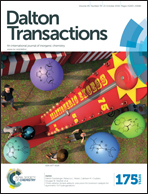Ru nanoparticles supported on nitrogen-doped porous carbon derived from ZIF-8 as an efficient catalyst for the selective hydrogenation of p-chloronitrobenzene and p-bromonitrobenzene†
Abstract
Ruthenium (Ru) nanoparticles (NPs) are supported on nitrogen-doped porous carbon (NPC) derived from metal–organic-framework (MOF) ZIF-8 for the first time. NPC is prepared by the direct carbonization of ZIF-8 crystals, which not only retains the original morphology of ZIF-8 but also provides a high surface area and stable chemical–physical properties. Ru NPs were supported by different methods. Four types of Ru-based catalysts are tested in the selective hydrogenation of p-chloronitrobenzene (p-CNB) and p-bromonitrobenzene (p-BNB) to haloanilines. Different catalytic activities and selectivities are obtained through these catalysts. After the screening of the catalysts and reaction conditions, high conversion and selectivity were obtained. The hydrogen pressure is limited to 1.5 MPa, which is much lower than most previous reports, and the dehalogenation reaction is restricted to a very low level. Furthermore, the dehalogenation properties of the Ru/NPC catalysts are also studied.


 Please wait while we load your content...
Please wait while we load your content...